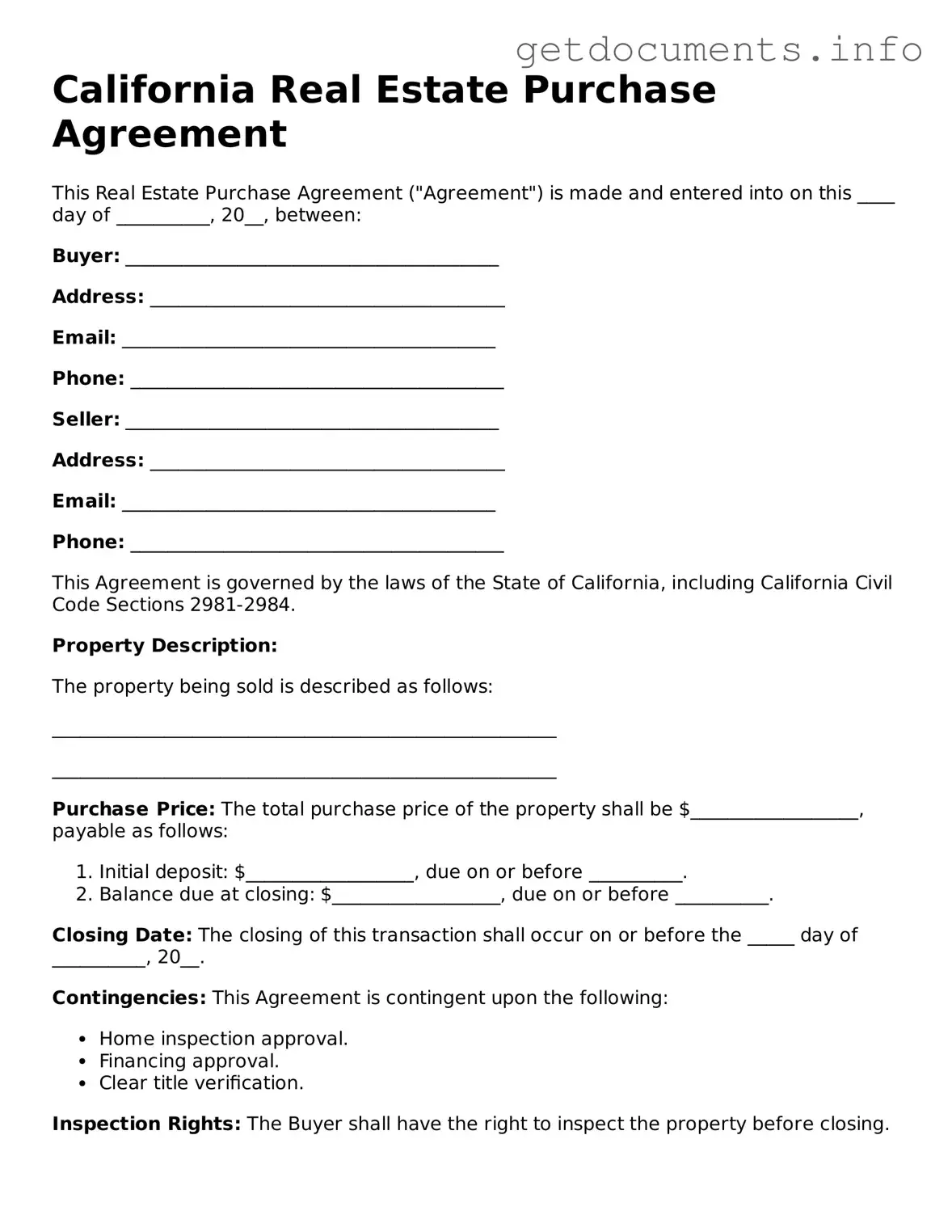Free Real Estate Purchase Agreement Template for California
The California Real Estate Purchase Agreement form is a legal document that outlines the terms and conditions of a real estate transaction in California. This essential form serves as a binding contract between the buyer and seller, ensuring that both parties are clear on their obligations and rights. Understanding this agreement is crucial for a smooth transaction, so take action now and fill out the form by clicking the button below.
Access Real Estate Purchase Agreement Editor
